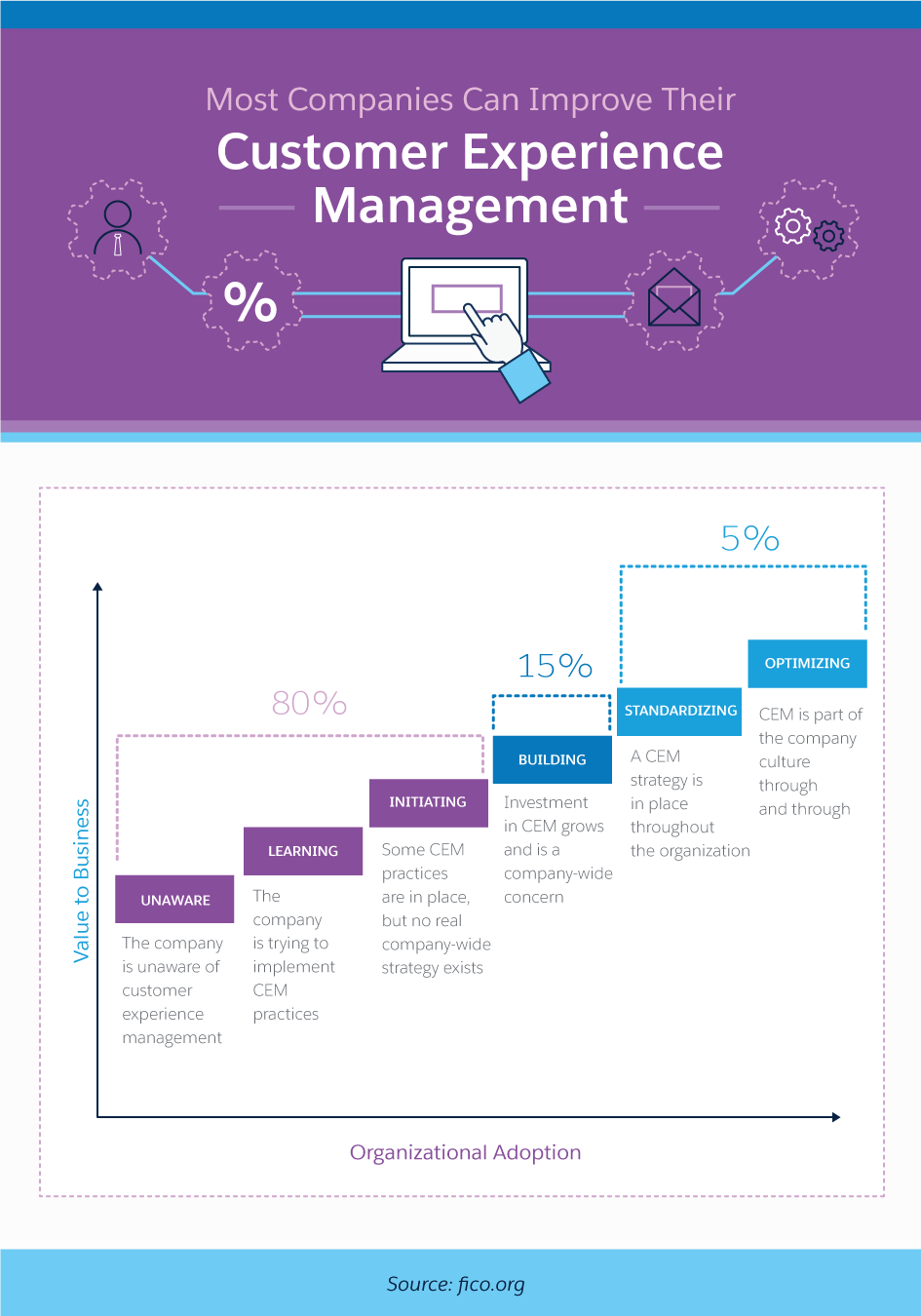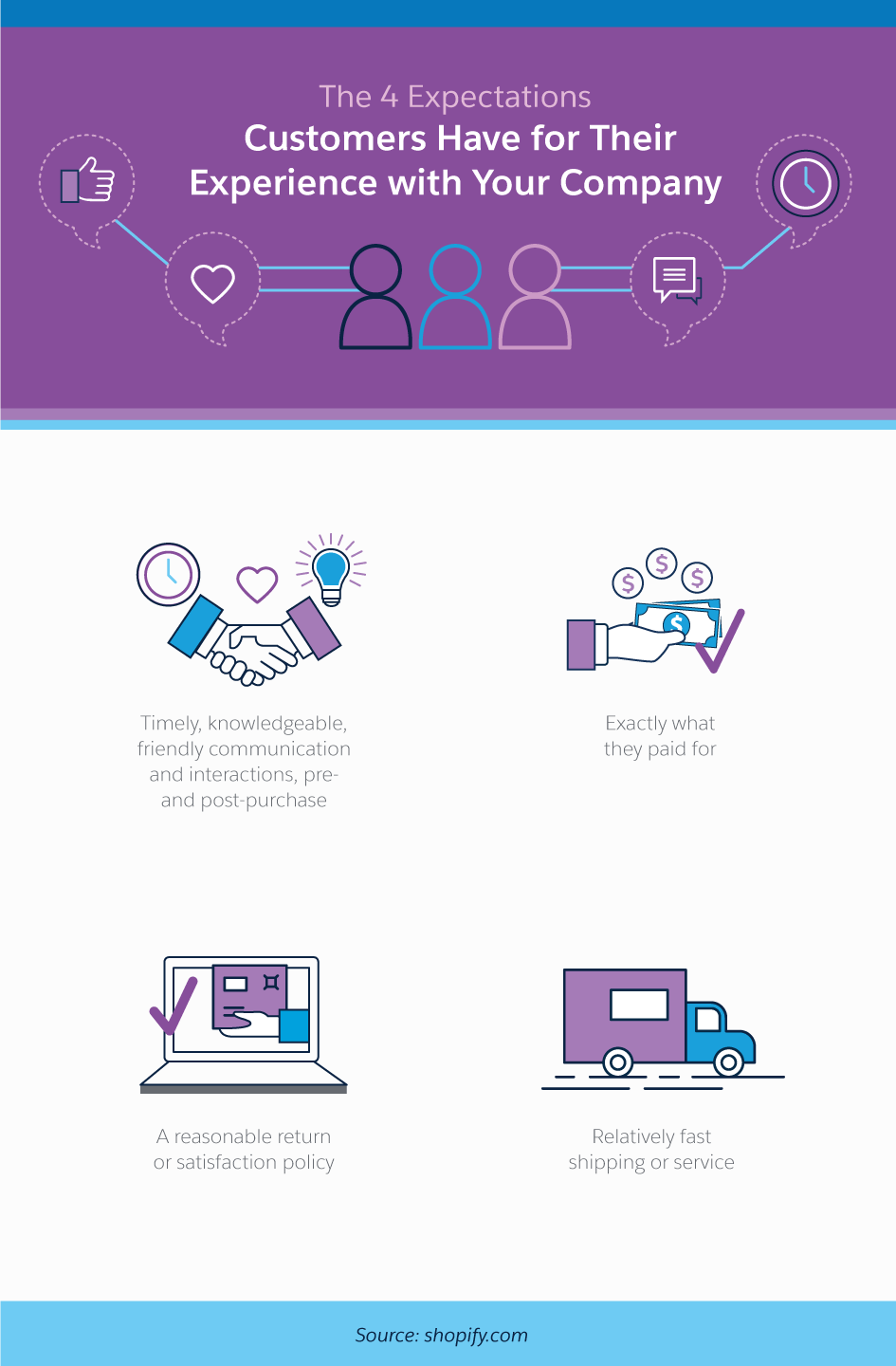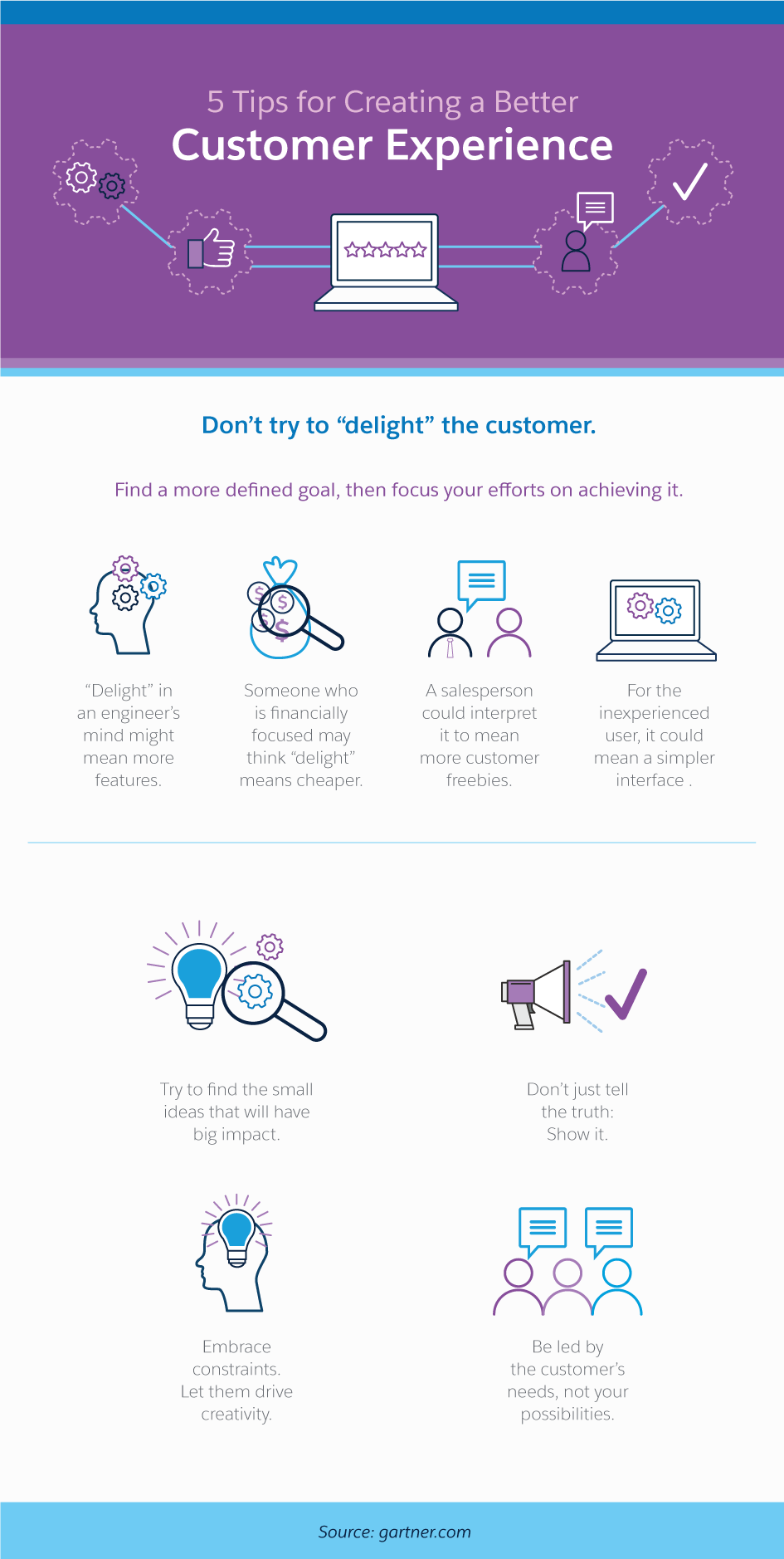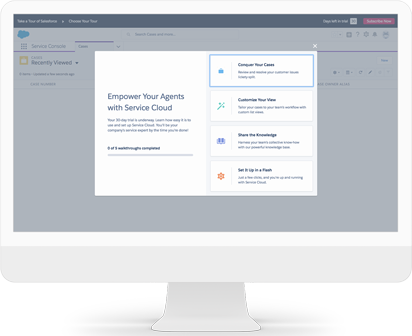Everything You Need to Know About Customer Experience Management

By Ronell Smith
Customer experience management means caring about the end-to-end experience your brand has with its prospects, customers, and brand evangelists. Managing the customer experience requires attention to detail at all steps along the path to purchase, from the content created to capture awareness, to the ecommerce experience of shopping on your site, and the after-sale commitment to keep loyal customers engaged using newsletters, coupons, and customer-appreciation sales.
Simply put, making customer experience management (CEM) a priority amounts to knowing your ideal customers’ needs, getting in front of them, serving them, and making sure they are happy before, during, and after the purchase.
Brands who make this commitment are most often rewarded with increased customer retention.
In fact, global giant SurveyMonkey found that 72 percent of Americans were far more likely to shop from brands that are known for making top-notch customer service a priority.
What’s more, the same survey found that 97 percent of customers were likely to share the news with family, friends, and others they are close to.
What is Customer Experience, and Why is it So Important?
It’s been said that a commitment to CEM is tantamount to having a “360-degree view of customers,” whereby a brand knows their needs, can discern their intent, understands where they go to consume information, and knows which channels they use to communicate, how and when they purchase products, and how they prefer to be engaged with brands both online and offline.
Additionally, for each step in the process, brands have data to back up their intuition, making it obvious how important CEM is to prospects, customers, and brands.

Dallas businessman Jason Nixson doesn’t need to be told how important CEM is. His HVAC company exists primarily because of CEM, in large part of his and his wife’s decision to execute a detailed customer experience strategy from the inception.
“Most of business is word of mouth, referrals,” says Nixson, owner of SunDollar A/C & Heat. “I have to focus on not only providing a great service, but also on getting positive reviews, answering questions on social media, being responsive via phone and email, and better understanding what additional needs my customers have.”
A focus on CEM helps Nixson’s business grow. “The more of a focus I make customer experience management, the better my business performs,” he says. “And you know what? It’s a virtuous circle: The happier one is with the other, the more we both benefit. It just keeps going.”
Nixson has come to a realisation that is at the heart of CEM: Improving customer experience is one of the surest ways to retain customers and keep the competition at bay.
Research agrees. As Gartner reports, a superior customer experience is one of the few remaining means of sustainable competitive differentiation as the effects of globalisation take their toll. In fact, a 2015 study by the brand found that 89 percent of brands expected to compete primarily on the basis of customer experience in the following year.
Any Companies Looking to Excel Should Make an Effort to Establish CEM as a Hallmark of Their Brand.
Exceed Expectations with Every Interaction
The first rung on the ladder of effective CEM is getting in front of prospects with content about your product or service. Online content should be optimised with keywords that match the intent of the prospects’ search queries, which makes it possible for search engines to serve them up correctly. This helps your potential customers find your brand early on in the process.
Without this awareness, any customer experience strategy is set up to falter at best, doomed to fail at worst.

This content should be well-written and insightful, and answer any objections prospects may have with your product or service. Additionally, it’s at this stage that you can put distance between your brand and the competition by highlighting the pros and cons of each, making certain to prove that what you offer is a better choice.
Most importantly, include a strong call to action (CTA) that speaks to customers’ need to know more about what your brand has to offer.
Nail this, and customers have fewer reasons to look elsewhere.
Make Task Completion as Simple as Possible
We’ve all heard a friend complain that a brand “was doing their best not to take my money.”
Often this is the result of a brand making it too difficult to access the information their customers need or to complete a process on their website. Common examples can include gated content, popups, or ecommerce pages weighted down with too many options.
One of the first steps in any effective customer experience strategy is to chart the buyer’s journey. Then you remove roadblocks at every step of the way, through:
- A fast, mobile-friendly website
- Simple and clear website navigation
- Clear and compelling CTAs
- Sharing links to related content within popular posts
- Quickly answering questions via phone, email, social media, or customer service software
The importance of removing roadblocks is hard to overstate. There is no CEM without the relationship that first has to be in place.
“Your first job is to help [prospects] do what they came to your website to do as quickly and easily as possible,” says Gerry McGovern, one of the foremost authorities on customer experience. ”That’s why I talk so much about tasks. You focus on your customer’s tasks. You seek to make them easy to complete. Will you need content to do this?”

Optimise for Customer Experience in the Right Channels
Two of the most common problems for brands focused on customer experience include focusing their energies on areas customers don’t see as a priorities, and assigning value to metrics that are of little consequence to customers or the brand.
For example, a company could obsess over Net Promoter Scores but not realise they do a poor job of bringing people into the top of the marketing funnel. The numbers would look great, but they only tell part of the overall story, missing the potential customers you’re not serving.
At the other end of the spectrum are brands that try to control every single detail, some of which might mean nothing to their ideal customers. This highlights the need to discern what’s important to those you hope to serve.
A simple way to begin this process is to take a look at your longest-standing and most loyal customers as a way of seeing how you can attract more like them.
- How did they discover the brand?
- Where did they enter the site?
- How many times did they visit the site before converting?
- What pages did they visit most often?
- Why did they decide to do business with you?
- How often do they interact with the site after converting?
- Do they evangelize about the brand offline?
You then optimise your processes to deliver a world-class customer experience in those areas.
Customer Experience Management Need Not be Complicated
One of the primary complaints brands use to deflect criticism for not having a CEM strategy is that it’s “complicated and expensive.”
They think the lack of time and lack of money argument suffices as an excuse to stay on the sideline. They could not be more wrong.
Customer experience management is about mindset as much as it is money. Brands simply have to make an effort to prioritise their customers’ experiences with their brand. The process, as touched on above, can start out quite basic at first and get more complex over time, as more resources become available.
The lack of time argument, too, is inaccurate. An effective customer experience strategy can be adapted and monitored using whatever time you have, whether that’s one hour a week or 10 hours a month.
What’s more, many of the tools we use each day make it quite easy to establish, track, and optimise a customer experience strategy without much in the way of time or money.
SunDollar’s Nixson explains customer experience management best: “Customer experience management is really about helping your customers get what they want so that, in the end, you get what your brand needs. When you place the needs of the customer ahead of the needs of your brand, you’ll be surprised at how well it turns out.


Learn to use Service Cloud the easy way.

Customer service best practices to follow.


